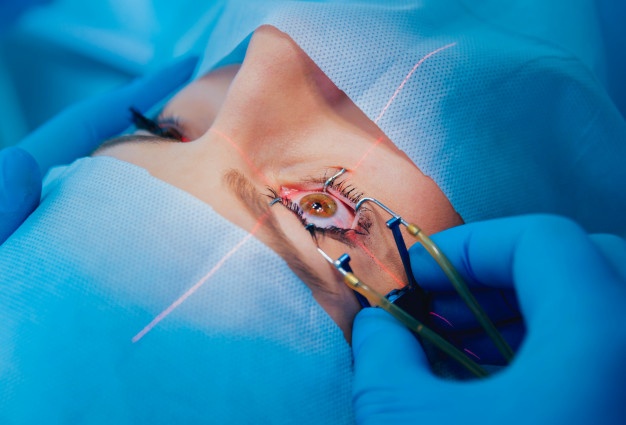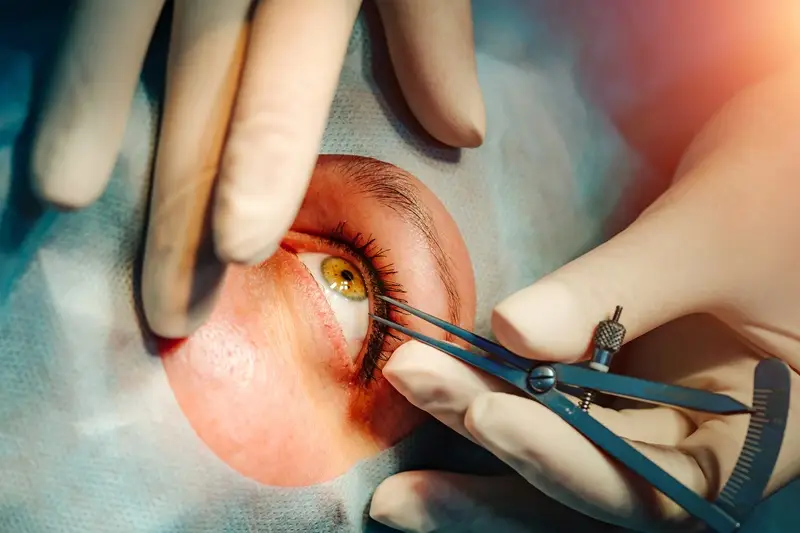Laser and Refractive Surgery: A Guide to Vision Correction
Laser and refractive surgery are advanced procedures designed to correct vision problems like nearsightedness, farsightedness, and astigmatism. These surgeries reshape the cornea, allowing light to focus properly on the retina, improving vision and reducing dependence on glasses or contact lenses.
👁️ Types of Refractive Surgery
- LASIK (Laser-Assisted In Situ Keratomileusis)
- The most common laser eye surgery.
- A thin flap is created on the cornea, and a laser reshapes the underlying tissue.
- Quick recovery time, with most patients seeing improvements within 24 hours.
- PRK (Photorefractive Keratectomy)
- Similar to LASIK, but instead of creating a flap, the outer corneal layer is removed.
- Suitable for people with thin corneas or those at risk of flap complications.
- Slightly longer recovery time than LASIK, but results are comparable.
- SMILE (Small Incision Lenticule Extraction)
- A minimally invasive laser surgery that removes a small piece of corneal tissue through a tiny incision.
- Less impact on corneal structure, making it ideal for people with dry eyes.


⚠️ Risks and Considerations
- Temporary dryness, glare, or halos around lights
- Undercorrection or overcorrection (which may require an enhancement procedure)
- Rare complications like infection or flap issues (in LASIK)
🩺 Post-Surgery Care & Recovery
- Rest your eyes for the first 24 hours and avoid rubbing them.
- Use prescribed eye drops to prevent dryness and infection.
- Avoid swimming, dusty environments, and intense screen time for a few weeks.
- Attend follow-up appointments to monitor healing.
Laser and refractive surgeries offer life-changing vision improvements, but it’s essential to consult an eye specialist to determine the best option for your eyes.
- LASEK (Laser Epithelial Keratomileusis)
- A hybrid of LASIK and PRK, where the outer layer of the cornea is loosened and replaced after laser treatment.
- Suitable for individuals with thin corneas.
- RLE (Refractive Lens Exchange)
- Replaces the eye’s natural lens with an artificial one, similar to cataract surgery.
- Ideal for patients with severe farsightedness or early presbyopia (age-related vision loss).
✅ Who is a Good Candidate?
✔️ 18 years or older (vision should be stable)
✔️ Healthy corneas with sufficient thickness
✔️ No significant eye conditions (like severe dry eye or keratoconus)
✔️ No major health issues that affect healing (e.g., uncontrolled diabetes)